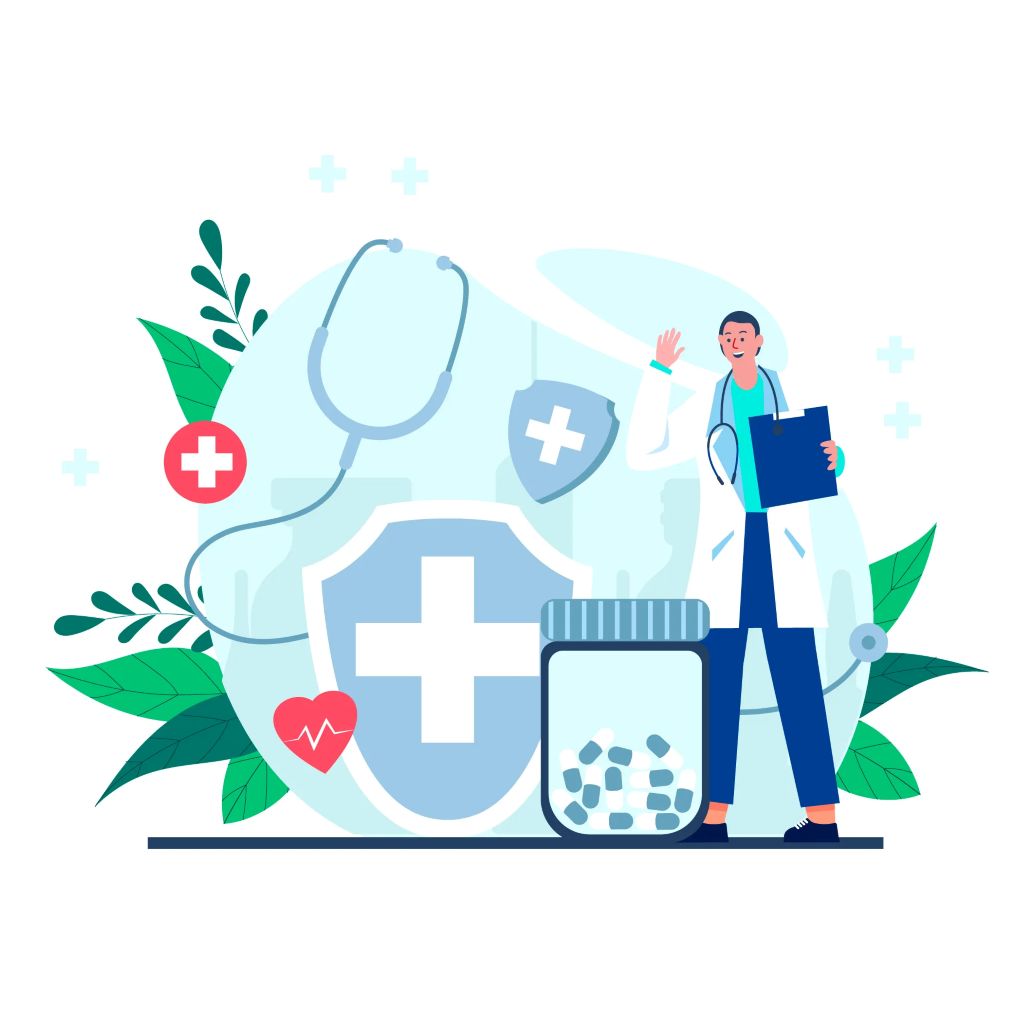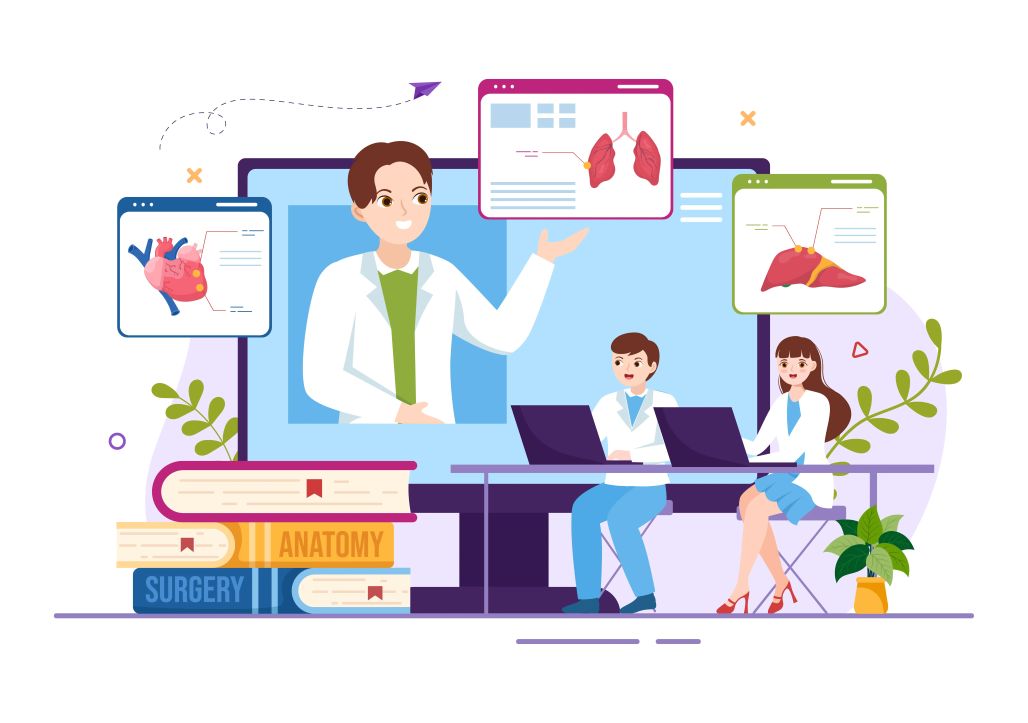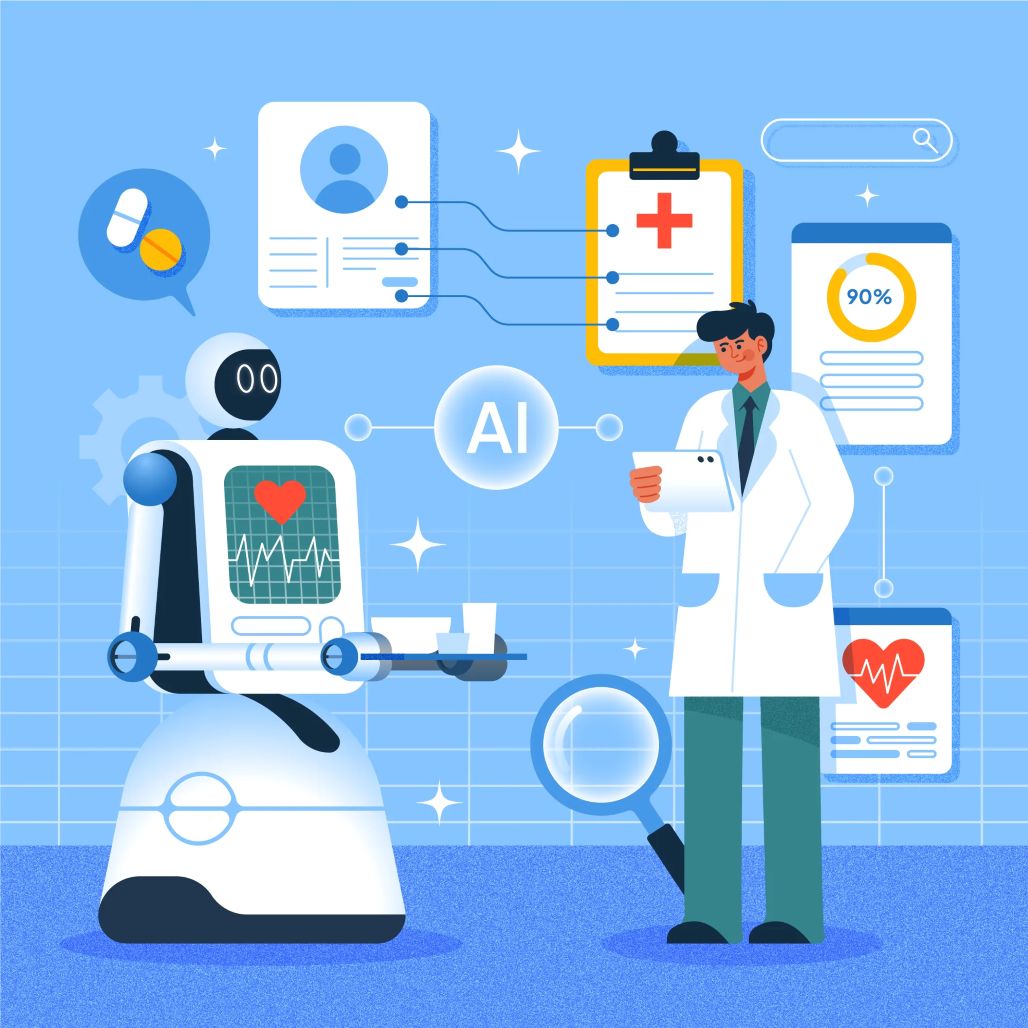
The healthcare industry moves at a breakneck pace. Medical knowledge evolves constantly, new technologies are introduced, and patient care standards are continuously updated. Keeping staff trained and compliant in such a dynamic environment is a major challenge. Traditional classroom-based training often falls short—requiring time, coordination, and resources that busy healthcare teams simply don’t have.
This is where a healthcare LMS (Learning Management System) comes in. It provides a centralized platform to deliver training, track progress, and ensure compliance across the organization. From onboarding new hires to ongoing skill development and regulatory updates, an LMS can transform how healthcare professionals learn, engage, and perform on the job. When selecting the best LMS for healthcare, organizations need a system built to handle compliance and skill development.That’s why an LMS for healthcare industry is no longer optional but essential.
Platforms like Calibr Learn make it easy to implement effective healthcare training programs. With features such as AI-powered personalized learning, mobile access, and real-time analytics, Calibr ensures your teams stay up-to-date and prepared, without the administrative headache.
Ready to streamline healthcare training? Explore our website or contact us and see how it can elevate learning in your organization.
What is a Healthcare LMS?
A healthcare LMS is a digital learning platform designed specifically for training medical professionals, hospital staff, pharma employees, and caregivers. Unlike generic systems, an LMS for healthcare training ensures compliance, safety, and continuous development.
By centralizing training into one system, organizations can ensure consistent delivery, improve engagement, and track performance in real time. It allows administrators to create role-based learning paths, so nurses, doctors, and administrative staff receive the training most relevant to their daily responsibilities. Content can be updated quickly, ensuring that all employees have access to the latest guidelines, protocols, and best practices.
Healthcare LMS platforms also integrate with other digital systems such as EHRs and HR software, reducing manual tracking and ensuring seamless reporting. Mobile accessibility means staff can learn on the go, during breaks, or between shifts, increasing convenience and participation. Features like microlearning, gamification, and AI-powered recommendations make training more engaging and effective. Ultimately, a healthcare LMS becomes a central hub for continuous professional development, supporting both compliance and performance improvement goals.
Why Healthcare Needs an LMS
Healthcare isn’t just about treatment—it’s also about precision, compliance, and continual learning. A well-designed LMS for healthcare training addresses challenges such as:
Regulatory Compliance – Meeting standards like HIPAA, OSHA, or Joint Commission requirements is critical. Healthcare organizations must ensure every staff member completes mandatory training and certifications on time. Automated reminders, centralized tracking, and detailed reporting help maintain compliance across large teams and multiple locations. This is where LMS pharma healthcare training compliance solutions support hospitals and pharmaceutical companies alike.
Skill Gaps – Healthcare evolves rapidly with new technologies, equipment, and treatment methods. Professionals need regular updates to stay competent. A healthcare LMS enables continuous skill assessment, targeted learning, and role-based refreshers. By emphasizing LMS healthcare skills, organizations can close gaps quickly and boost performance.
Time Constraints – Offering flexible, mobile learning so professionals can train anytime, anywhere. Nurses and doctors often work long or irregular shifts, making traditional classroom training difficult. An LMS provides on-demand modules, microlearning lessons, and offline access to ensure no one misses critical training.
Patient Safety – Reducing errors by ensuring staff are well-trained and up-to-date. A standardized LMS ensures that all personnel follow the same protocols and guidelines, reducing mistakes and improving overall care quality. Interactive lessons, scenario-based assessments, and real-time feedback further enhance understanding and readiness.
Platforms like Calibr’s Compliance Training Solution help organizations reduce risk and maintain industry standards with ease, while also improving staff engagement, competency, and confidence.
Key LMS Features for Healthcare

When evaluating the best LMS for healthcare, it’s not enough to just have generic training tools. Healthcare has its own unique needs: strict compliance rules, evolving medical practices, and a workforce that often learns under pressure. That’s why it’s critical to choose a platform with features designed specifically to support healthcare organizations.
Here’s a comprehensive LMS features list that truly makes a difference:
1. AI-Powered Learning
Healthcare professionals don’t have the time to sift through irrelevant training modules. Adaptive systems like Calibr’s AI-powered personalized learning recommend the right courses based on each user’s role, performance, and skill gaps. This means a nurse, a lab technician, and a pharma rep can all have unique, customized learning journeys—maximizing efficiency and minimizing wasted time.
2. Compliance and Certification Management
Compliance is non-negotiable in healthcare. Whether it’s HIPAA, GDPR, OSHA, or regional medical council requirements, certification must be tracked and updated. An LMS makes this easy by:
Storing all certifications in one place.
Sending automated alerts for renewals.
Generating instant compliance reports for audits.
This eliminates human error and reduces the risk of penalties, while keeping staff continuously prepared.
3. Mobile Learning
Doctors and nurses often work 12+ hour shifts, leaving little time for structured classroom training. With Calibr’s Mobile Learning, they can access modules anytime, anywhere—even offline. Whether on a break in the hospital cafeteria or commuting home, healthcare staff can continue learning without disruptions.
4. Microlearning
Medical procedures can be highly complex. Microlearning breaks them down into short, digestible modules. For example, instead of a two-hour course on infection control, learners can access 10-minute lessons on specific topics like hand hygiene, PPE usage, or sterilization techniques. Calibr’s Microlearning ensures knowledge retention and makes learning less overwhelming.
5. Gamification and Engagement
Mandatory compliance training often feels tedious. Gamification changes that by adding points, badges, and leaderboards to encourage friendly competition. Nurses or technicians can earn recognition for completing training on time, which boosts motivation and drives higher completion rates.
6. Analytics and Reporting
Without data, training impact is hard to prove. With Calibr’s Real-Time Analytics, administrators can:
Track learner progress.
Identify training bottlenecks.
Measure ROI by linking training to performance improvements.
This level of insight helps healthcare organizations optimize learning programs and continuously improve outcomes.
These LMS features make platforms like Calibr the best LMS for healthcare organisations
For more information on selecting the right platform features for your organization, read our full blog on Top 5 Features to Look for in a Healthcare LMS
Benefits of an LMS for Healthcare Organizations
A well-implemented LMS for healthcare organisations creates value across every department. Here are some of the biggest advantages:
Faster Onboarding
Hospitals often face high staff turnover. With an LMS, new hires—whether doctors, nurses, or technicians—can quickly get up to speed using structured, role-based onboarding modules. This reduces time-to-productivity and eases the transition into critical roles.
Reduced Compliance Risk
Missed certifications or expired credentials can lead to costly consequences. Automated reminders, centralized records, and streamlined reporting ensure no compliance requirement is overlooked. With automated alerts, an LMS for healthcare training keeps certifications always current.
Improved Patient Outcomes
When staff are skilled and confident, the quality of care improves. A strong LMS reduces medical errors, improves communication between teams, and ensures consistent adherence to best practices—all of which translate to better patient outcomes.
Cost-Effective Training
Classroom training often requires physical spaces, trainers, and scheduling disruptions. An LMS eliminates these costs by delivering digital training at scale. It’s particularly useful for large hospital networks where staff are spread across multiple locations.
Scalability
Whether you’re training 50 staff in a small clinic or 5,000 in a hospital network, an LMS grows with your needs. Updates can be rolled out instantly, ensuring consistent learning across the entire workforce.For scalability and compliance, the best LMS for healthcare can support clinics and hospital networks of all sizes.
Example: A mid-sized hospital used Calibr Learn to onboard 200 nurses in less than two weeks—reducing training time by 40% and cutting associated costs by nearly half.
For more information on the specific benefits LMS delivers to the healthcare sector, read our full blog on Top 10 Benefits of Using a Learning Management System (LMS) for Healthcare Training
Use Cases of LMS in Healthcare
Healthcare training isn’t one-size-fits-all. Different roles and departments require tailored learning experiences. Here are some of the most common use cases where a healthcare LMS adds value:
Employee Onboarding
An LMS for healthcare organisations streamlines onboarding with pre-built training paths. From understanding hospital policies to learning about electronic health records (EHR) systems, onboarding is critical. Platforms like Calibr’s Employee Onboarding Solution provide pre-built training paths, so new hires can seamlessly integrate into their roles without overloading supervisors.
Compliance Training
Compliance isn’t optional—it’s essential. Solutions like healthcare training solutions or LMS pharma healthcare training compliance ensure regulatory readiness. Hospitals must ensure every employee completes courses on patient confidentiality, workplace safety, and medical protocols. With an LMS, compliance training is automated, trackable, and easily verifiable during audits.
Medical Skill Development
Doctors and nurses must constantly upgrade their skills. A healthcare LMS supports blended learning models, combining digital modules with hands-on practice. This enables learners to strengthen hard skills (like using new diagnostic equipment) while also enhancing soft skills (like empathy and patient communication).This is how an LMS for healthcare training supports lifelong learning.
Sales & Pharma Training
For pharmaceutical companies, consistent training is critical. With Calibr’s Sales Training Solution, medical reps can stay updated on the latest drug information, sales techniques, and compliance rules. This ensures accurate communication with healthcare providers, reducing risk and increasing trust.
Whether it’s onboarding new staff, maintaining compliance, or developing advanced medical skills, a healthcare LMS brings structure and efficiency to every stage of training. For pharmaceutical reps, an LMS pharma healthcare training compliance framework ensures they meet strict industry regulations while staying updated on new products.
Platforms like Calibr Healthcare Training Solutions are designed specifically for this purpose—helping organizations stay compliant, boost efficiency, and deliver better patient outcomes. Also, it delivers healthcare training solutions tailored to pharma reps and clinicians alike
Ready to transform training in your healthcare organization? Explore Calibr Learn today.
Choosing the Best LMS for Healthcare
Picking the right healthcare LMS is more than just a features checklist — it’s about fit. The right platform must match your clinical workflows, security needs, and long-term learning strategy. Ask practical, specific questions and look for evidence the vendor has worked with healthcare customers before. Evaluating LMS selection criteria for healthcare compliance and training ensures your organization meets both regulatory and performance goals. For hospitals and pharmaceutical companies, LMS pharma healthcare training compliance capabilities are critical to guarantee proper certifications and audit readiness.
LMS Selection Criteria for Healthcare Compliance and Training
Compliance-first design: Does the system automate certification tracking, expiries, and audit reports? Can it store evidence for inspections while supporting healthcare LMS compliance training selection criteria?
Integration and interoperability: Can it connect with HRIS, Single Sign-On (SSO), electronic health records (EHR), and payroll systems? Look for SCORM/xAPI support, an LRS, and robust APIs. A strong LMS for healthcare organisations integrates seamlessly across all systems.
Data security and privacy: Is PHI protected at rest and in transit? Does the vendor meet healthcare security standards and regional privacy rules? Security is non-negotiable for any LMS for healthcare training.
Scalability and performance: Can the platform handle your user base across hospitals, clinics, and remote teams without slowdowns? The best LMS for healthcare grows with your organization.
Mobile and offline access: Can frontline staff train between shifts or offline on devices with limited connectivity? A healthcare LMS with mobile-first design enables learning anytime, anywhere.
Content flexibility: Can you author, localize, and version content quickly? Are translation and multi-language support available? Flexible content ensures your LMS for healthcare industry remains up-to-date with evolving clinical knowledge.
Analytics that drive action: Does reporting show skills gaps, training ROI, and links between learning and clinical KPIs? LMS features like real-time analytics help administrators measure impact effectively.
Support and implementation: What does onboarding look like? Can the vendor provide role-based templates, migration help, and ongoing customer success? Choosing a platform with robust healthcare training solutions ensures smooth implementation and long-term adoption.
A demo should show real healthcare use cases, not generic slides. If you want an example of a healthcare-focused solution, check out Calibr’s healthcare offerings — they show how compliance, role-based paths, and analytics can be packaged for clinical teams.
Future of Healthcare Training with LMS

For the LMS for healthcare industry, future trends point to AI personalization and VR-based training. Healthcare learning is going digital — and fast. New tech is changing not just how people learn, but what they learn and when.
What’s emerging now:
AI-driven personalization adapts content to each learner’s role and performance. That reduces time spent on irrelevant modules and targets true skill gaps.
Immersive simulation (VR/AR) lets clinicians practice rare procedures in a safe, repeatable environment. This converts expensive hands-on training into scalable digital experiences.
Predictive analytics surface who will need refreshers before errors appear, enabling preventive training interventions.
Micro-credentialing and digital badges validate skills in real time and follow clinicians across organizations.
Blended, competency-based pathways combine online theory with in-person practice and supervisor sign-offs.
Social and collaborative learning lets teams share case studies, quickly spread best practices, and crowdsource solutions to common clinical problems.
Multilingual, mobile-first delivery ensures training reaches diverse, 24/7 workforces.
The business case is strong. Large consultancies and industry studies estimate huge savings when digital tools are used strategically. That makes investing in a future-ready LMS a risk-mitigating move and a performance lever. Platforms that already embed AI personalization, collaborative learning, and multilingual support — like Calibr — are positioned to help healthcare organizations move from one-off trainings to continuous competence.
External Data & Industry Stats — What They Mean for You
Numbers carry weight—but their value lies in interpretation. Here’s how key stats translate into actionable insights for your healthcare LMS strategy:
1. Booming eLearning Market
The global healthcare e-learning services market was valued at approximately USD 11.10 billion in 2024 and is projected to grow at a CAGR of 14.58%, reaching around USD 24.45 billion by 2030 Grand View ResearchMedbound Times.
Why it matters: A rapidly expanding market means more innovation and vendors—but it also raises the bar for choosing a partner with proven healthcare implementations and long-term stability.
2. Clinician Documentation Burden
Clinicians—including nurses and doctors—spend over a third of their workweek (around 13.5 hours) on clinical documentation HETT Show .
Why it matters: Reclaim learning time by investing in training that improves efficiency with digital systems (like EHR optimization). Prioritize modules that boost day-to-day operational effectiveness.
3. Digital Health Adoption Improves Performance
In hospitals adopting digital health tools, healthcare workers’ performance significantly improves while workload decreases BioMed Central.
Why it matters: This supports the core value of a healthcare LMS—not just as a compliance tool, but as a performance booster that helps staff work smarter, not harder.
4. Virtual Training Delivers Cost Savings
Digital learning, such as computer-based and virtual training, has shown cost savings of up to ~60% compared to traditional face-to-face training PMC.
Why it matters: You can quickly quantify ROI by comparing cost-per-learner before and after LMS implementation—accelerating buy-in from leadership.
How It Works in Practice
Imagine this scenario:
A large multi-specialty hospital faces an urgent compliance issue. During an internal audit, administrators discover that over 30% of nurses and junior doctors have outdated certifications for infection control and patient data privacy. Not only does this put the hospital at risk of heavy fines, but it also compromises patient safety.
Previously, the hospital relied on in-person workshops and email reminders for training, which led to missed deadlines, poor record-keeping, and inconsistent knowledge across teams. Managers were overwhelmed by chasing completions and manually compiling reports for inspections.This is where Calibr makes a difference.
With Calibr, the hospital quickly:
Launches role-based compliance training paths for different staff categories. Nurses get modules on infection prevention, while administrative staff complete patient data protection training.
Automates reminders and renewals, ensuring no certificate expires unnoticed.
Uses Calibr’s Real-Time Analytics to see exactly who has completed training and who still needs follow-up.
Leverages Calibr’s Microlearning to deliver short refresher lessons, reducing learning fatigue for staff working long shifts.
Generates instant compliance reports for management and regulators—cutting hours of manual work into a single click.
Within six weeks, compliance rates jump from 70% to 100%, audit readiness improves dramatically, and staff confidence in procedures increases. The hospital not only avoids penalties but also creates a safer, more accountable environment for patients and employees alike.
That’s the power of a healthcare LMS designed with compliance, scalability, and user experience in mind — and why platforms like Calibr Healthcare Training Solutions are trusted by forward-looking organizations.
Elevate healthcare training with the right LMS
A well-designed healthcare LMS keeps staff compliant and confident. Healthcare training is mission-critical. The right healthcare LMS keeps staff compliant, confident, and connected to the latest clinical knowledge. Start by auditing your training needs, then choose a platform that integrates with your systems, secures patient data, and supports blended, competency-based learning at scale.
Practical next steps:
Run a short pilot focusing on one high-impact use case (onboarding, compliance, or EHR training).
Measure completion rates, time-to-competency, and any operational improvements.
Use those results to build the business case for wider rollout.
Thus, the right LMS for healthcare industry ensures compliance, efficiency, and better patient care.
If you want a platform built for healthcare use cases — compliance paths, mobile microlearning, AI personalization, and healthcare analytics — explore Calibr Healthcare Training Solutions and see how they can help you launch a pilot quickly.
Ready to modernize training? Start with Calibr today by contacting us or schedule a demo today to see why Calibr is the best LMS for healthcare organisations worldwide.


